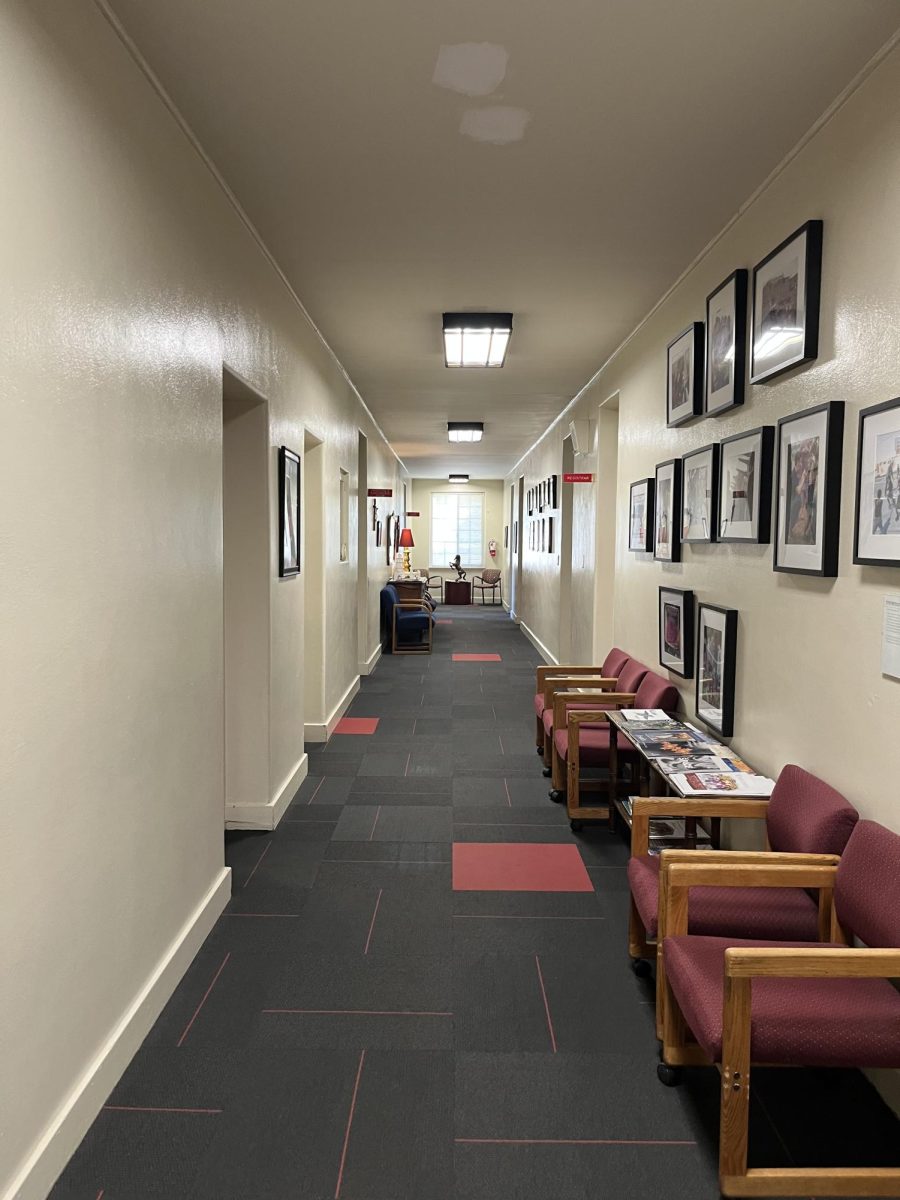By Julian De Ocampo ’13
THE ROUNDUP
When the phrase “economic gap” comes up, it’s easy to get lost in numbers and figures.
In reality, the differences in socioeconomic status manifest themselves in tangible ways that go beyond statistics, such as a student’s ability to maintain a social life or apply to college.
Do costs cut into socialization?
Students often spend their weekends engaging in a variety of activities on the weekends – but not all of these come free.
Last issue, The Roundup followed a number of students after school and found that many activities, from going to the Village Racquet and Health Clubs to practicing rock climbing at a local facility, required pricey membership fees.
Despite the seemingly high cost to maintain a social life, some students said they have found that friendship is not based on financial situations.
Brophy’s Work Study program currently offers financial assistance for students in need, allowing them to more easily afford tuition.
“I can say with confidence that my economic status has never affected my social life,” said Cesar Lopez ’13, a student who is currently involved in the Work Study program. “I’m blessed with great friends who don’t look for friends to ‘mooch’ off of or who are preppy or stuck-up. Everyone here who I’ve met are really friendly guys and never take into account my economic status. Whenever I go out with friends, I never let money ruin my time with them.”
Lopez also added that being involved in the Work Study program actually allows him to spend his free time getting more involved in the school by helping out at events such as Open House, Back to School Night and sporting events.
Additionally, he said that being involved in the program has allowed him to connect with other students who have become his friends.
Although he noted that “everyone’s different,” he also said that because Work Study students generally come from public middle schools and share similar backgrounds, they typically have a lot in common.
Fellow Work Study student Ivan Ramirez ’13 echoed these statements.
“I believe that everyone that is part of the Work Study program finds that there is more in common with other people than they think,” he said. “They find out that they aren’t the only ones that have problems and I believe it motivates them to do better.”
Another Work Study student, Edwin Galan ’13, said that although the effect is there, it is surmountable.
“The economic status affects me in that I have to manage my budget and keep track of it a lot more than others,” he said. “It does at times hinder the possibility to going out to places that require money. Even though it doesn’t affect things greatly, it does have some effect and makes it a bit more stressful.”
Galan added that while Brophy students “get along well whether or not they’re in it,” it does help them create bonds slightly more easily.
All three students added that without the Work Study program, it would have been significantly more difficult for them to attend Brophy and make the connections that they have formed today.
Work Study coordinator Mr. Steve Smith ’96 said that he sees the program as a way for students to get to know each other, noting that several students sign up for events in tandem with friends.
“I’ve never seen a more affluent group of students alienate a Work Study guy,” Mr. Smith said. “Speaking from my own experience, I internally felt apart from some of the more affluent students, but that was my thing, my own fears and misconceptions, it wasn’t like something in the movies where a group of rich students laughed at me and sped off in their convertible. I just don’t think things like this happen at Brophy but maybe I’m being naïve.”
Opportunity gap factors into college decisions
As college acceptance letters pour into students’ mailboxes, many seniors have their eyes set on leaving Arizona to pursue an education in locales far away from Brophy.
But this choice comes with a cost – a significant sticker price that often dissuades students from applying to out-of-state schools.
While some students are able to attend Brophy through the use of financial assistance and the Work Study program, the financial aid operations at various universities vary in their generosity.
Ramirez said he would likely attend one of the in-state universities – Arizona State University, University of Arizona or Northern Arizona University – following graduation.
“My economic status has definitely affected my college decision process because the process has truly been based on where I can afford to go, not where I would actually like to attend,” he said.
But beyond the mere cost of tuition, economic inequality sometimes affects students throughout the admissions process.
Chair of College Counseling Ms. Katie Cardinali cites standardized testing as an obstacle for many low-income students.
“Low-income students are sometimes first-generation students who do not have a college-going culture in their family and can be less savvy about testing requirements,” she said. “More importantly paying for expensive test prep courses or private tutors is out of the question for low-income families.”
One way to minimize this effect, she said, is to consider testing-optional schools. Universities such as Washington D.C.’s American University and North Carolina’s Wake Forest University have made the switch to testing-optional in an ongoing trend.
“Testing is only one part of the application,” Ms. Cardinali said.
Regardless of income, students can distinguish themselves for admission into selective universities through academic rigor, community involvement and strong recommendations letters, she said.
She added that many colleges will take into account financial responsibilities such as jobs or Work Study programs if they are noted on the application.
Students reticent about applying to high-cost schools should also take into account the amount of financial aid available to them.
“Look for language like ‘Meets 100 percent of demonstrated financial need’ in the financial aid section of a website,” Ms. Cardinali said. “If a university makes that commitment, it means they will do whatever they can to make that education possible for the student, combining grant, loan and work study to help bridge the gap between cost of attendance and the Estimated Family Contribution.”
Ms. Cardinali also warns that there is sometimes a difference between what a university believes the family can contribute, and what the family feels is affordable.
Before selecting a school, Ms. Cardinali advises students to evaluate each university’s four-year graduation rate, the retention rate from freshman to sophomore year and the student loan default rate.
“Two schools might have the same cost of attendance per year on paper,” she said, “but comparing those factors could reveal two very different debt scenarios down the road.”
Although some Work Study students are applying to out-of-state schools with the hope of utilizing these resources, the sacrifices still weigh on their mind.
Lopez said he hopes to go out-of-state despite the financial challenges it may bring.
He said that he and his mother have been looking at college costs closely and planning accordingly throughout the college planning process.
“If I do plan on going out-of-state, I’d have to get a job to help with some personal expenses,” he said. “My mom would do the best she can to help with my personal expenses, but sometimes it won’t be enough. Facing personal expenses also comes with student loans I would have to take out. This doesn’t scare me too much, but it does affect me and my family’s economic status.”
Lopez is currently considering in-state schools ASU and NAU, as well as out-of-state schools Rockhurst University and Indiana University – Purdue University Indianapolis. He is also waiting to hear back from other out-of-state schools. He said he hopes to attend IUPUI because of its unique motorsport engineering program, something that would otherwise be unavailable in-state.
Ms. Cardinali said she encourages all students facing any sort of financial challenges to speak to their counselors and find mentors and advocates.
“We can’t help unless we’re aware of the situation,” she said. “I think some students are anxious that they will sound like they are trying to make an excuse for a situation, but there’s a noticeable difference between acting like a victim and sharing your experience.”








